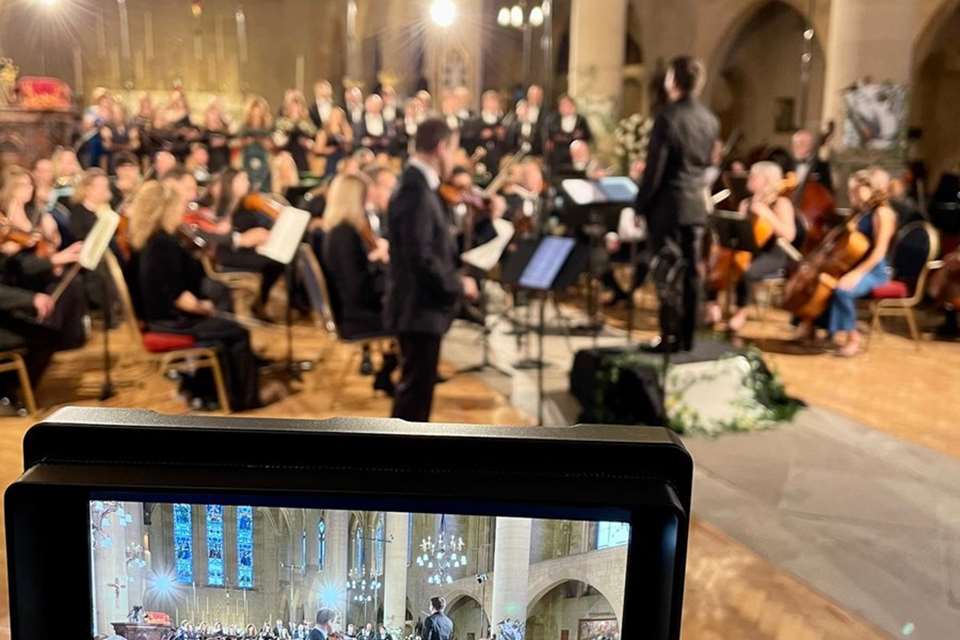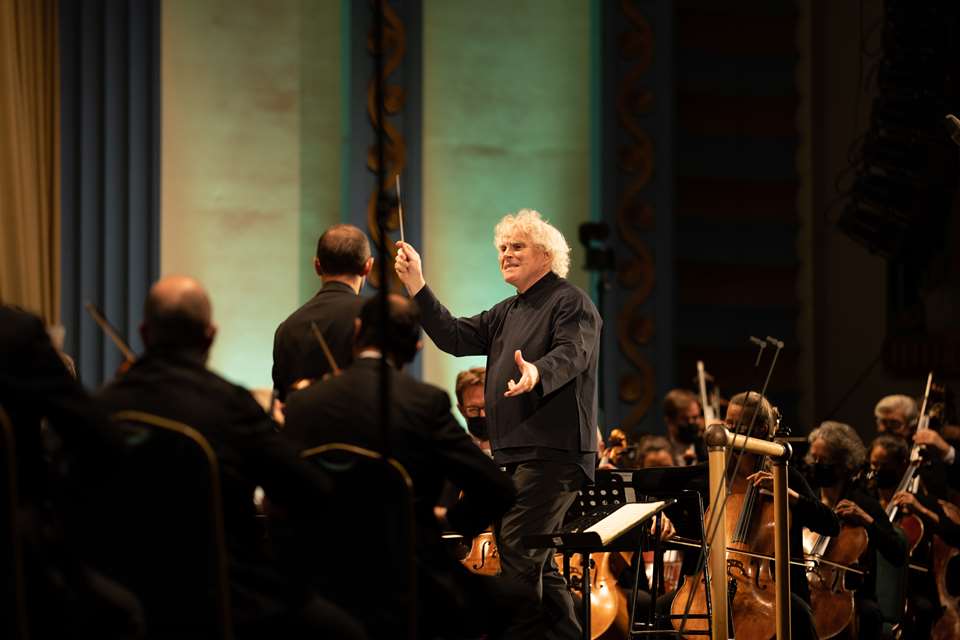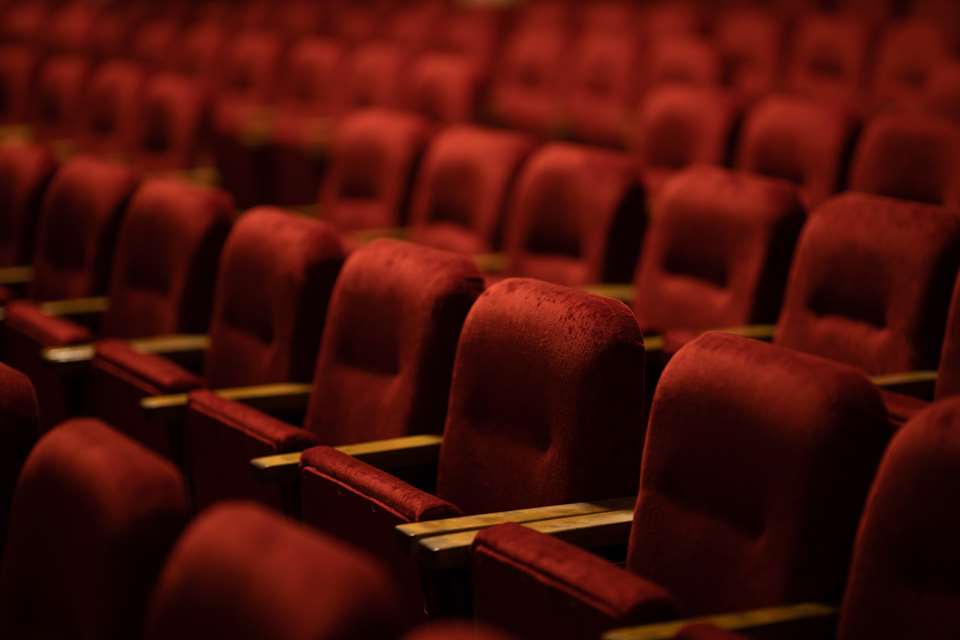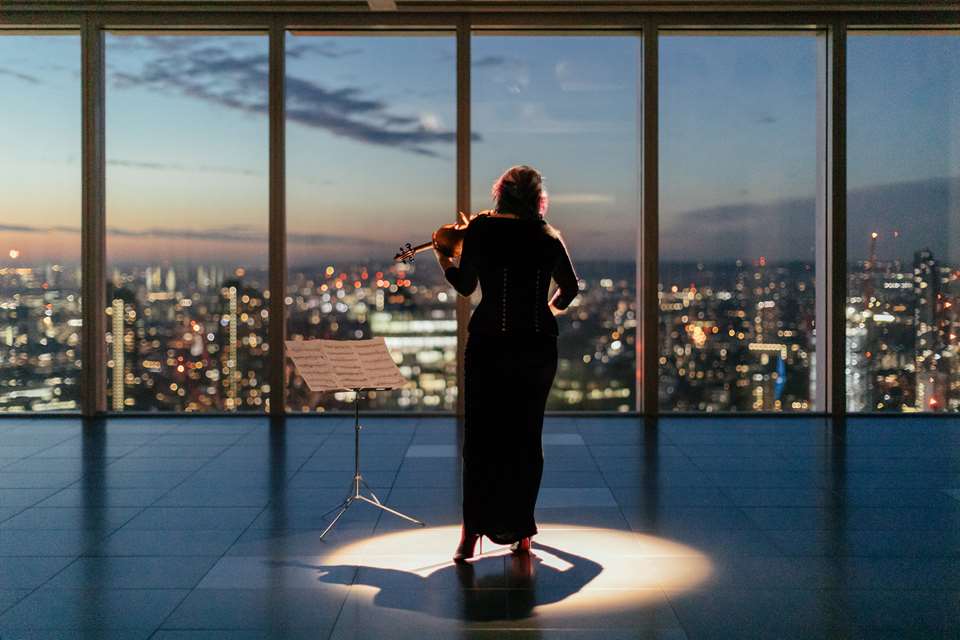The future is hybrid: Stagecast and the evolution of music broadcasting
Dale Wills
Wednesday, May 17, 2023
Dale Wills goes behind the scenes with Stagecast at the Barbican to find out exactly how the music broadcasting specialists are bringing the full London Symphony Orchestra concert experience to digital audiences at home
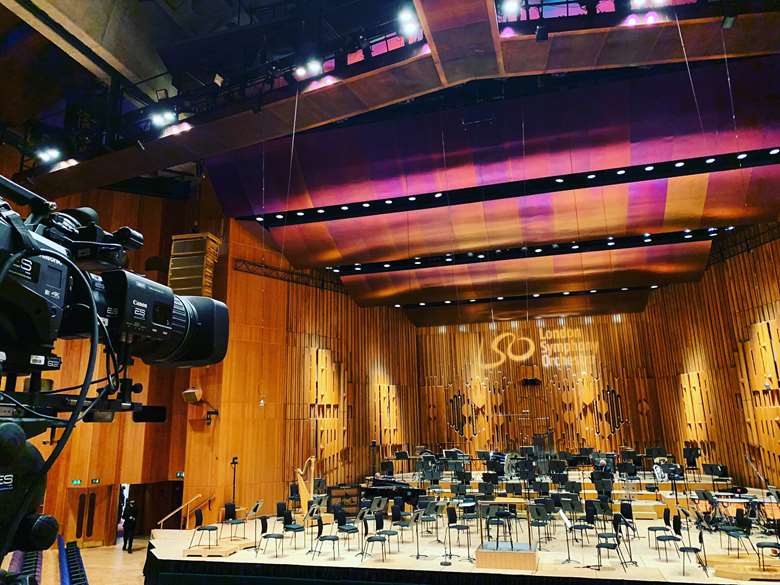
Can you recall your first encounter with an orchestra? Not the casual soundtrack to our lives – the tapestry of backing tracks to TV adverts, films, or long car journey white noise – but the first time you truly experienced the choreographic magic of a group of musicians moving as one. My first experience of this alchemy was as an eight-year-old. Growing up away from metropolitan centres, my introduction to this mystical realm was via a VHS of the London Symphony Orchestra playing Berlioz’s amazing Symphonie Fantastique with the late André Previn. As a young child, I remember being acutely fascinated by a forest of bows moving with perfect synchronicity. And in truth, I still am.
Descending from the wind tunnel of Silk Street in the mediaeval City of London into the labyrinthian underbelly of the Barbican is akin to walking through the gates of the chocolate factory. My eight-year-old self would have been green with envy! I’m here to meet the incredibly skilled Stagecast team, the technical wizards who, led by CEO Matt Parkin, are making the London Symphony Orchestra’s work accessible to a new wave of digital audiences across the world.
There does not seem to be any suggestion of the LSO shying away from its newfound digital audience, even now that concert halls are accessible once more.
The LSO is no stranger to being recorded: the orchestra founded its in-house record label, LSO Live almost twenty-five years ago. The acquisition of LSO St Luke’s, nestled in the framework of Hawksmoor’s Old Street obelisk, further set the scene for one of the world’s most digitally adept classical ensembles.
At 8am, when I arrive, Parkin’s team are busy resetting their backstage home for the week. For this series, Stagecast is utilising the Barbican’s already impressive in-house technical setup, together with the team at Classic Sound, who are responsible for capturing the iconic sound of the LSO in its London home. The two are then seamlessly synced for broadcast to audiences all around the world.
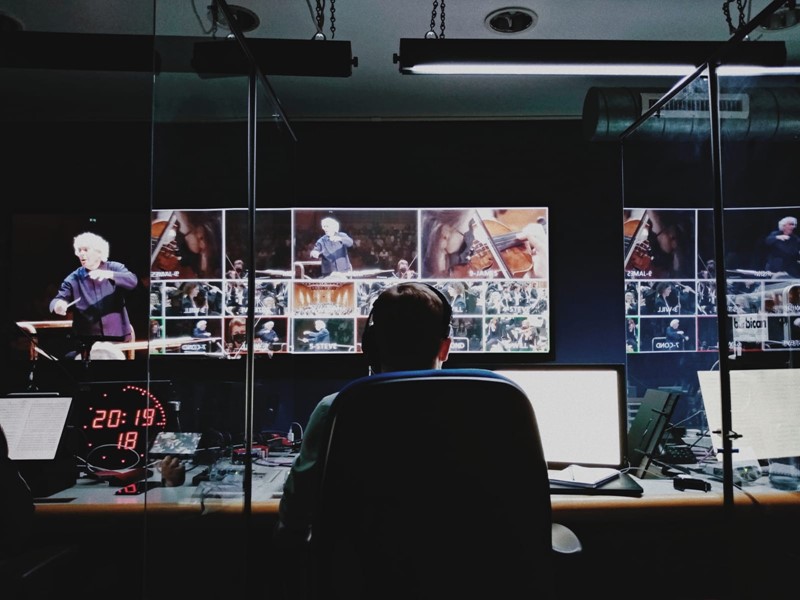 The 'technical wizards' at Stagecast use nine cameras to catch every moment of the LSO's Barbican performances ©Dale Wills
The 'technical wizards' at Stagecast use nine cameras to catch every moment of the LSO's Barbican performances ©Dale Wills
Stagecast is the brainchild of Matt Parkin and chief technology officer David Rees. The project took shape in 2015 as a bespoke solution for classical music ensembles looking to enter the world of streaming. The first stream went live from the Wigmore Hall in 2016, however it took the national lockdown to see the venture really take wing. Over the pandemic period, Stagecast captured over 280 concerts and events, becoming a full-time exploit with more than 90 freelance creative and technical staff involved. At the height of lockdown, Stagecast had three teams out, capturing different events each night.
Stagecast approaches the task of capturing live music making from a unique perspective. Parkin's staff have backgrounds in classical music, giving them an innate understanding of the geography; not only of the orchestra in front of them, but of the music they are sharing. The visuals paint a picture of the structure of piece, tracking the arcs of phrases and highlighting individual players and sections.
Stagecast has developed their own cloud-based camera scripting technology to help the director and camera operators get the right shots. The director plots the camera script on top of the orchestral score, showing exactly where in the music each shot should appear, and which part of the orchestra the camera operator is highlighting. For this historic series, Stagecast is using the Barbican's inbuilt system, which includes 8 PTZ (pan-tilt-zoom) cameras hidden around the hall. Additionally, they have one floor camera of their own in the auditorium. Unlike a traditional broadcast set up, this way of working allows for a much smaller crew (each camera operator for this shoot looks after multiple cameras). The pared-down team and unobtrusive equipment make for a much less intrusive experience for the live audience and the players alike.
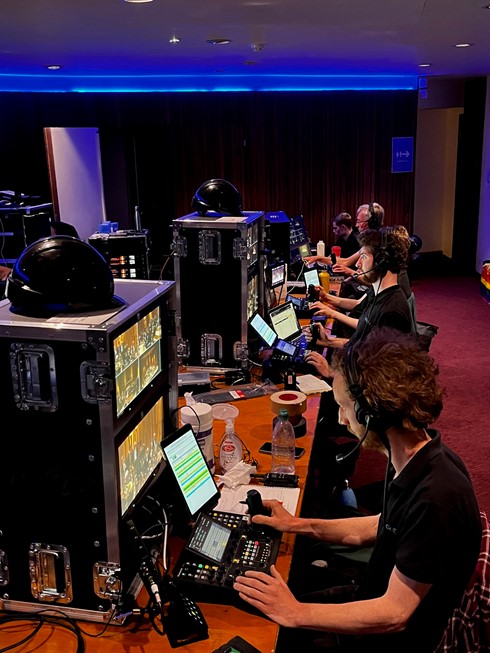 The Stagecast team have broken away from the typical broadcast setup to make sure they capture the orchestra's performance unobtrusively ©Dale Wills
The Stagecast team have broken away from the typical broadcast setup to make sure they capture the orchestra's performance unobtrusively ©Dale Wills
During one of the short and infrequent breaks during the morning, I sat down with Kerry Clark, the director for this concert. Clark began her career with BBC Radio 3, before moving to head up the BBC’s coverage of the Young Musician of the Year competition. My first question was where, in a tumultuous score like Debussy’s La Mer, do you start choreographing the nine cameras and finding the points of visual interest? Clark’s answer was simple: where the audience in the hall would be looking. It seems like such an easy approach, although I know that I spend much of my evenings in the Barbican as transfixed by the magnificence of the space as by the splendour of the orchestra.
The next questions for the director to consider are: what is the point of this part of the piece, and what is the composer trying to do? For Clark, there is a special delight in finding details in the score and picking them out for the audience. One of the biggest challenges for the team was capturing John Adams’ Harmonielehre, a score which almost seems to defy capture: somewhere between Adams’ native minimalism and the post-romantic echoes of Mahler and Sibelius, the team found a visual narration for the tone poem which feels somehow natural and illuminating at once.
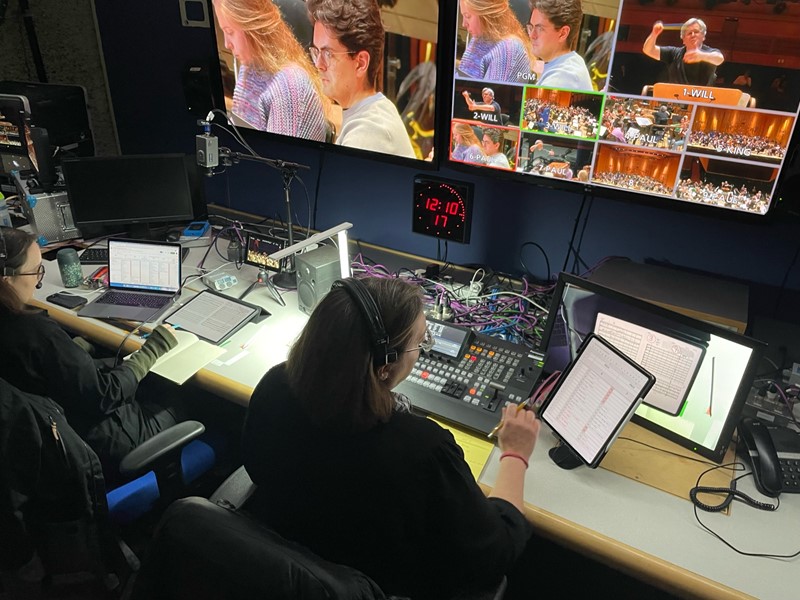 It is director Kerry Clark's responsibility to choreograph the cameras and give the broadcast's digital audience a visually exciting experience ©Dale Wills
It is director Kerry Clark's responsibility to choreograph the cameras and give the broadcast's digital audience a visually exciting experience ©Dale Wills
Again, Kerry highlights the importance of having a musical understanding; which of the crotales lined up across the back of the stage will be bowed and which will be struck? It helps that the cameras are constantly recording, even when they are not ‘live’, allowing the director, together with the orchestra, additional choices in the final edit. Last minute stage changes can have knock-on impacts for the filming team; the repositioning of the two harps leads to some last-minute replotting in order to retain a pivotal shot through the strings at a key moment.
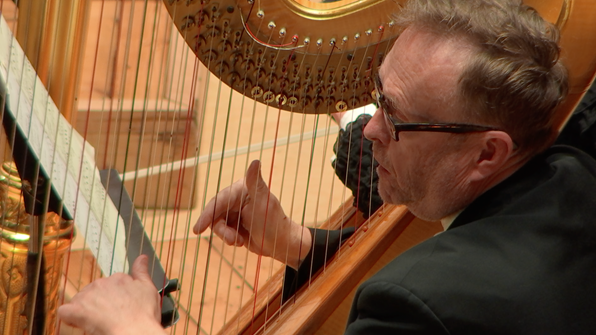 'The repositioning of the two harps leads to some last-minute replotting in order to retain a pivotal shot through the strings at a key moment.' (Image courtesy of Stagecast)
'The repositioning of the two harps leads to some last-minute replotting in order to retain a pivotal shot through the strings at a key moment.' (Image courtesy of Stagecast)
The members of the LSO could not be more accommodating. However, Parkin's maxim is that Stagecast is there to help the musician do what they’re trying to do, not the other way around. The LSO players could hardly be more used to being under the redlight. Compared with other classical music ensembles, the orchestra is a digital native. In addition to their ground-breaking record label, the group is light years ahead of the market. Becky Lees, head of LSO Live, describes this work as an ‘extension of the orchestra’. It allows the group to tell their story and share the legacy of the LSO in a new space. LSO’s innovative Lockdown Programme, assisted by Stagecast, proved a lifesaver for the Orchestra, at a time where musicians’ wings were clipped. Utilising St Luke’s, the LSO Discovery base, the orchestra were able to reach established and new audiences alike without risking either players or audience. In true LSO fashion, the group began experimenting with innovative ways to utilise the space, in part born from the necessity of social distancing, and in part due to the narrative approach of this ensemble. For Lees, communicating the experience of the music is paramount in all the orchestra’s digital offerings.
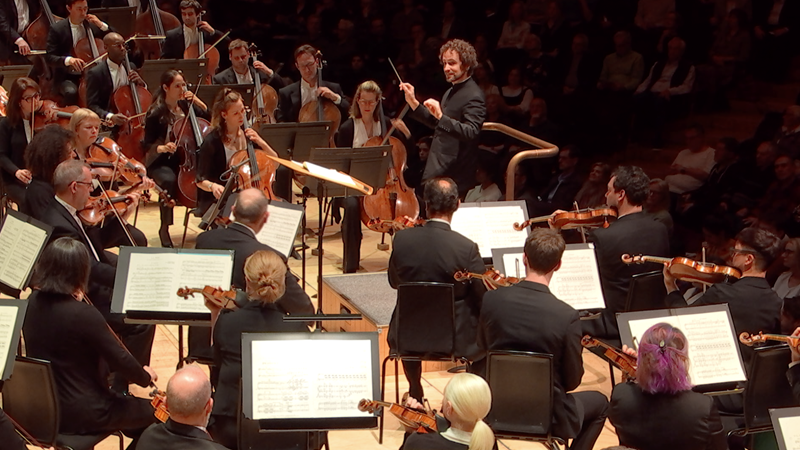 (Image courtesy of Stagecast)
(Image courtesy of Stagecast)
Another aspect of this work is embedded in the notion of sustainability. The LSO has committed to continuing to tour but recognises that, in an increasingly resource-sensitive world, touring may not mean the same thing forever. As online audiences evolve, and the ensemble grows in its response to their new audience, the only limits are imagination and finance. There does not seem to be any suggestion of the LSO shying away from its newfound digital audience, even now that concert halls are accessible once more.
For Stagecast, too, the possibilities are endless, and the schedule of work coming in is showing no signs of slowing down. This amazing concert is being captured for broadcast on the new Symphony.live streaming platform. Parkin talks excitedly about the range of new classical music broadcasters opening up, and laments that few of these are currently broadcasting to UK audiences. In spite of the video-on-demand nature of this event, live streaming is very much at the heart of Stagecast’s DNA. Audiences have found new ways of listening, and many of us are not prepared to give up on the convenience and comfort of our digital spaces. ‘The future’, Lees reminds us, ‘is hybrid’.
